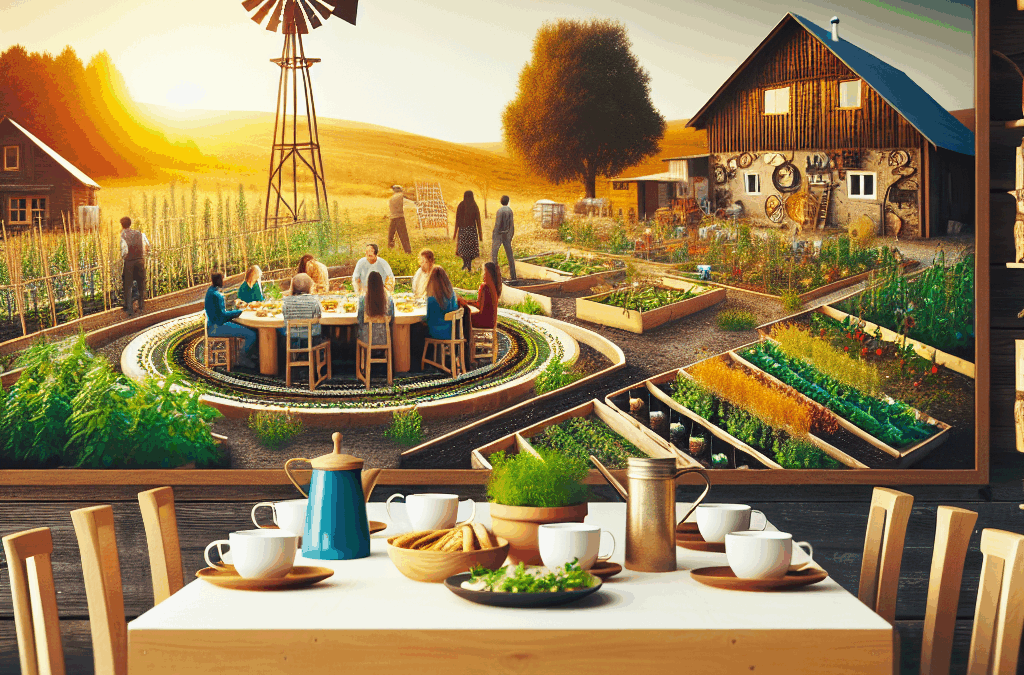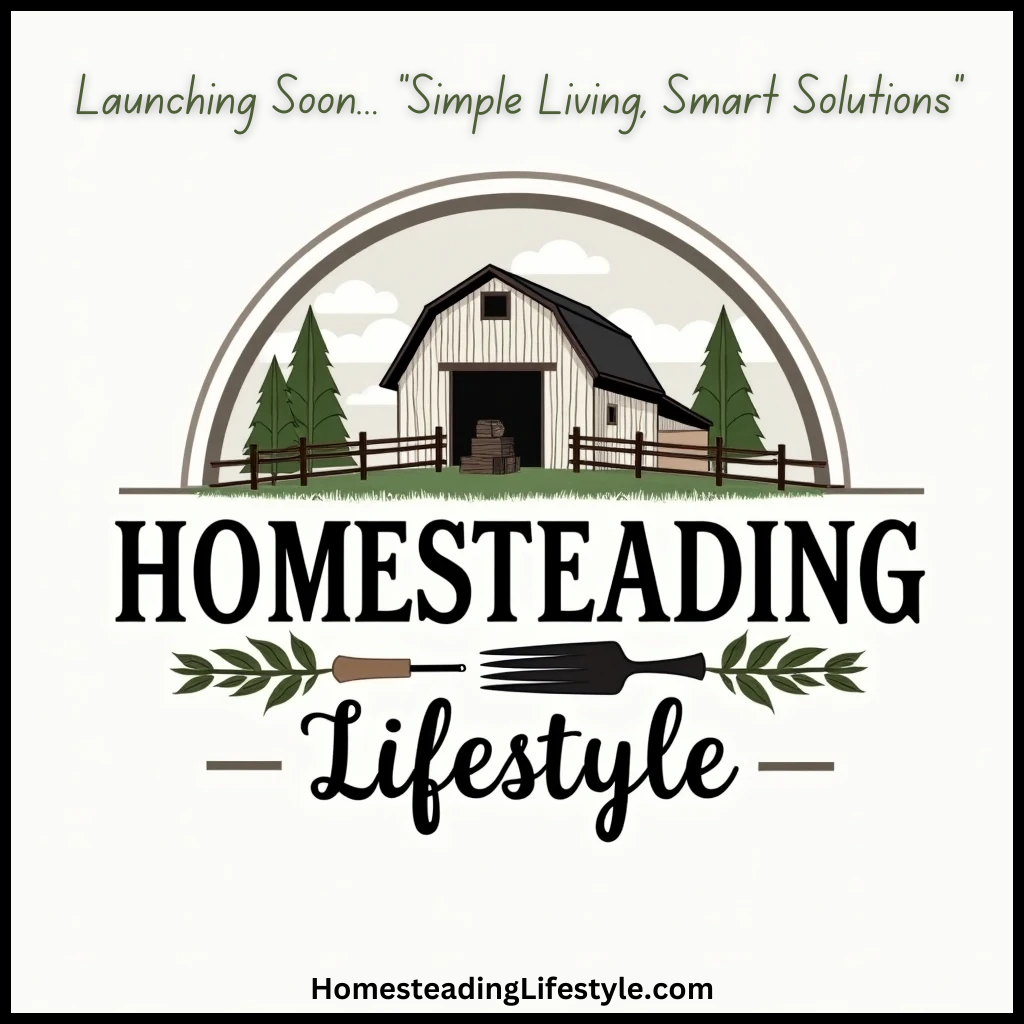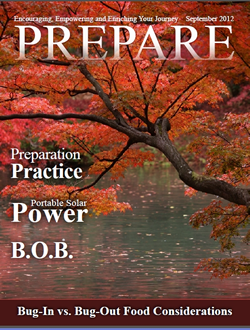Creating a Welcoming Environment
Start with an Open Heart
When I first transitioned to my homestead, I quickly realized that creating a warm and welcoming environment was key to building community. People are drawn to kindness and an open-hearted attitude. Being approachable, smiling, and greeting visitors fosters a sense of belonging. It’s like setting the stage for a good conversation; warmth invites people in.
Every time I meet someone new, I try to engage them in conversation about their interests or experiences. This approach not only helps break the ice but also shows that I genuinely care about their presence. I’ve had some fantastic chats on the porch during a lazy afternoon, and it wasn’t long before those chats blossomed into friendships.
Furthermore, hosting regular gatherings, like potlucks or community workshops, keeps the spirit alive. By bringing people together, you create an opportunity for relationships to form, and I’ve found those informal settings to be where true connections happen. Remember, it’s about sharing your space and making others feel comfortable in it.
Home is Where the Heart Is
Transforming my space into a community hub was a game changer. I began by making sure my homestead is not only functional but also inviting. Adding cozy seating areas, lights, and decorations, like flower pots or art from local artists, creates an atmosphere that encourages people to linger. Simple things, like fresh flowers or homemade cookies, can warm the heart and create a homely vibe.
Moreover, I’ve learned that my homestead should reflect my personality and values, which resonate with community members. By sharing my journey, my struggles, and successes, others feel compelled to do the same, fostering a deeper connection.
Ultimately, changing the physical space can dramatically impact the community’s feel. Make it a beautiful, open place where connections can flourish organically. And trust me; it pays off in friendships, support, and shared experiences.
Focus on Shared Goals
Finding common ground is crucial in building community. When I first got involved with my local homesteading group, we sat down to discuss our shared goals. Whether it’s sustainability practices, organic gardening, or simply helping each other thrive, having mutual interests makes collaboration a lot smoother.
During those early meetings, I saw how powerful it was to align efforts on shared projects. We worked together on a community garden, and not only did we grow produce, but we also cultivated friendships and a sense of belonging. Collaboration on tangible goals works wonders for community cohesion.
In essence, focusing on shared goals creates motivation and keeps the community engaged. It’s what brings everyone together; every collaborative effort feels like a team victory that draws us all closer. So, get together, brainstorm, and make stuff happen!
Building Trust Through Communication
Be Authentic and Honest
Ah, trust! It’s the cornerstone of a healthy community. I learned early on that openness and honesty quickly build trust within my homestead community. When issues arose, whether personal or concerning the group, addressing them openly helped us navigate through misunderstandings effortlessly.
I always strive to keep communication lines open. Regular check-ins with community members about their needs and feelings go a long way. During those moments, I often share my own vulnerabilities as well. Being real not only builds trust but strengthens bonds.
Another approach I’ve found effective is engaging in regular community meetings. Giving everyone a voice to share their ideas, concerns, or triumphs fosters a culture of transparency. When we talk, we build connections, creating a safety net of support that enriches the entire community.
Listen Actively
Listening is as important as speaking up. I’ve discovered that when folks feel heard, it encourages them to engage more, making the community vibrant and active. Practicing active listening not only makes individuals feel valued, but it also provides valuable insight into the community’s needs.
During gatherings, I make a concerted effort to pay attention. It might sound basic, but nodding, making eye contact, and asking questions shows I’m genuinely interested in what others have to say. My homestead community has thrived on mutual respect and understanding, which blossomed from the seeds of active listening.
Sometimes, I hold feedback sessions where we can discuss improvements collectively. This demonstrates that their thoughts matter and helps cultivate an atmosphere of trust. Trust leads to a stronger, more united community, where everyone’s voices are honored and cherished.
Conflict Resolution as a Learning Opportunity
Conflicts are natural in any community, and I’ve had my fair share. But instead of viewing them as setbacks, I’ve learned to embrace them as learning opportunities. Addressing conflicts head-on can lead to richer understanding and growth.
When misunderstandings arise, I always encourage dialogue. Bringing everyone involved together to discuss their viewpoints fosters a culture of resolution and collaboration. It’s crucial to approach these discussions with a calm and neutral mindset, steering clear of blame or anger. This moment often becomes a steppingstone for deeper connections.
After resolving these issues, reflecting on conflicts helps reinforce the community’s collective values and growth. Each resolution lays a new foundation of trust, proving that we can overcome differences and learn from them. Paddle on through the storm, and you’ll find smoother waters await on the other side.
Engaging in Shared Activities
Organize Work Parties
Nothing brings people closer than a good ol’ work party! When I started organizing group projects like building fences or planting trees, the energy shifted. People were eager to lend a hand, share their skills, and enjoy each other’s company while getting their hands dirty.
It’s not just about getting work done; it’s about the camaraderie that blossoms in the process. Often, we’d share stories while lifting heavy things, bonding over laughter and sometimes the struggle. These shared experiences become shared memories that enhance community ties.
Plus, it’s a chance to involve everyone, regardless of skill level. A work party goes beyond just labor; it becomes about sharing knowledge and uplifting each other. By making these efforts a regular occurrence, we keep the spirit of collaboration alive and thriving.
Host Educational Workshops
Education is another fantastic way to engage with the community. I love hosting workshops where everyone can learn new skills or share knowledge. From canning and preserving to building chicken coops, these sessions can be as diverse as you want!
Every time we gather for a workshop, I’m amazed at how much knowledge we collectively possess. The beauty lies in the sharing; everyone has something valuable to bring to the table. It becomes a melting pot of skills, ideas, and connections, enriching our community experience.
Moreover, these events foster a sense of belonging as people feel more encouraged to contribute. It’s uplifting to see someone who learned how to garden from a workshop blossom into a community provider, sharing their fruits, literally and figuratively!
Participate in Local Events
Getting involved in local events is crucial for creating visibility and fostering goodwill. I often participate in local fairs, farmers’ markets, or community clean-ups. It’s a way to showcase our homesteading practices while connecting with others in the area.
Seeing familiar faces at local events builds stronger ties beyond our usual community interactions. It helps to recognize each other as part of a bigger network, creating a sense of unity and shared purpose. Plus, it provides amazing opportunities for collaboration and community growth.
Let’s not forget; you get to have fun while building connections! Whether it’s sharing a booth or swapping produce, local events allow you to see the fruits of your labor and the power of community spirit firsthand. It’s like spreading good vibes while growing together!
Embracing Diversity
Welcome All Voices
A homestead can thrive through the richness of diversity. I always strive to welcome individuals from various backgrounds, cultures, and experiences. Everyone brings unique perspectives and skills, enhancing our community vibrancy.
Every time I meet someone different, I see it as an opportunity to learn something new about life, gardening, or different homesteading methods. The more varied the voices, the broader our collective knowledge base becomes.
Encouraging everyone to share their stories during gatherings fosters inclusiveness. By honoring each other’s experiences and perspectives, we create an environment where everyone feels valued and respected, leading to a stronger, more united community.
Cultural Appreciation through Shared Meals
Let’s face it, sharing food is a universal bonding experience! I love organizing themed potlucks where everyone brings dishes that reflect their heritage or personal culinary skills. These events not only feed the body but also the soul.
Through these meals, I’ve discovered a wonderful tapestry of flavors and traditions, fostering appreciation for each other’s backgrounds. We get to learn about the stories behind the dishes, which enriches our community knowledge and deepens our connections.
Nothing breaks down barriers like a good shared meal. It becomes an opportunity to celebrate who we are as individuals while recognizing our shared love for food, fun, and good company. Trust me; it’s one of my favorite ways to embrace diversity in our homestead.
Learning and Growing Together
When it comes to embracing diversity, fostering opportunities for learning together is essential. Whether it’s offering language exchanges or workshops on different cultural practices, every initiative builds a sense of community and trust.
I often find that diversifying our learning experiences opens the door to new friendships and insights. We can all teach and learn together; it’s a beautiful journey of growth that transcends cultural boundaries.
Ultimately, embracing diversity doesn’t just benefit individuals; it enriches the entire community. By creating a culturally rich environment, we foster collaboration, mutual respect, and understanding, bringing us closer as a homestead family.
Feedback and Adaptation
Encouraging Constructive Feedback
The importance of feedback is often underestimated. It’s a crucial aspect of building a resilient community. When I first started involving everyone in decision-making processes, I noticed how willing members were to share their thoughts on what works and what doesn’t.
Encouraging constructive feedback creates a culture where everyone feels comfortable expressing their opinions. It’s fascinating how fresh perspectives can reshape our homestead initiatives. I’ve learned much from fellow community members, turning their insights into actionable steps for improvement.
From my experience, creating feedback channels, whether through group discussions or anonymous suggestion boxes, helps keep communication open. It demonstrates that everyone’s voice matters, making the community feel valued and included. It’s all about growing together!
Being Adaptable
Change is the only constant, right? I’ve had my plans crumble at times, but adaptability is key. Being flexible and open to new ideas has helped our community evolve in ways I never imagined. We must embrace change rather than resist it.
When we gather feedback, it often points toward areas in need of adjustment. I’ve had to pivot our community gardens based on the season or conversations about new sustainable practices and technology. Embracing adaptability allows us to thrive rather than just survive.
So, if a project turns out differently than expected, I take it as a chance to learn and grow—I encourage everyone to do the same. This open-mindedness leads us to discover innovative solutions and pathways for our community.
Celebrating Progress
Lastly, I believe it’s essential to celebrate our collective progress, big or small. Reflecting on and acknowledging our achievements together not only reinforces our community bonds but also encourages further participation.
Whether it’s completing a project, reaching a collective goal, or even personal milestones, sharing those moments creates a sense of accomplishment. I make it a habit to highlight our successes during gatherings, acknowledging everyone’s contribution. It feels good to recognize everyone’s effort!
Celebrating progress keeps morale high and cultivates a sense of appreciation. Ultimately, we’re all in this together, and each step forward strengthens our community roots.
FAQs
What is the importance of community on a homestead?
Building a community on a homestead provides support, shared knowledge, and a sense of belonging. It fosters collaboration and helps individuals thrive collectively.
How can I create a welcoming environment at my homestead?
Begin with an open heart, make your space inviting, and host gatherings. The warmth and approachability you offer will encourage others to engage.
How do I resolve conflicts within my community?
Address conflicts openly and encourage dialogue. Approach discussions calmly and listen actively to each perspective to find common ground and solutions.
What are effective ways to engage community members?
Organize work parties, host educational workshops, and participate in local events. These activities foster collaboration and build trust within your community.
Why is diversity important in a homestead community?
Diversity brings richness to the community, offering various perspectives, traditions, and skills that enhance collaboration and cultural appreciation.





